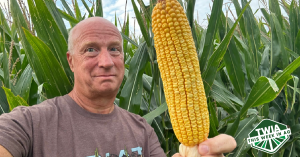By Lyndon Smith,
President and CEO
Bio Huma Netics, Inc.

The 40,182-square-foot building sits on 3.3 acres in Tempe, which is our sister city located near BHN headquarters in Gilbert, Arizona. In 2011, when we purchased the building in Gilbert, we wondered if we’d ever be able to fill that building, but with our sales volumes and capabilities being what they are now, we have outgrown it and require more warehouse space.
One of the requirements that we were looking for during the property hunt was rail access, as it would allow us to freight goods more efficiently. When we located this particular property in Tempe, we promptly realized it would be ideal for us since it had rail access, and also provided additional warehouse space that would help expand our production capabilities. The rail access will help bring in raw materials directly to the facility while empowering us to export finished goods to far off locations through rail network. It will also facilitate our ongoing mining operations in our two mines in Idaho and New Mexico.
This acquisition will give BHN almost 100,000 square feet under roof situated on close to 10 acres in total. In the coming few months we plan to transform the warehouse building into our vision of a world class packaging, blending, and bottling facility! I believe this is one of the many crucial steps along our path to becoming the world leader in humic substances.
This is an exciting time for BHN, as we look forward to great opportunities to grow and be able to meet our customers’ needs not only in the short term but for many years to come.
Related Posts

Anaerobic Digester Saves 42% In Sludge Hauling
by Heather Jennings, PE The case summary described below is an example of how our Bio Energizer® product helped reduce overall solids handling and improved supernatant clarity. It really doesn’t take much Bio Energizer® to reduce solids within your system when the microbial community is stimulated or “kicked into gear” to do their job. Typically,

This Week in Ag #79
Seeing is believing. And I’m convinced the recent WASDE reports on crop production aren’t lying. Over the weekend we took my son to college. Our scenic journey through farm country – beauty is in the eye of the beholder, after all – took us deep into the Corn Belt. The projected 2024 corn yield in the Prairie State

This Week in Ag #57
“What are you planting this year?” That may not sound like a trick question, considering it’s already mid-March. But ask any farmer south of the Mason-Dixon line that question and you’ll likely see their shoulders shrug. You see, unlike in the West, where permanent crops and processor contracts make planting decisions more straight-forward, or in the

